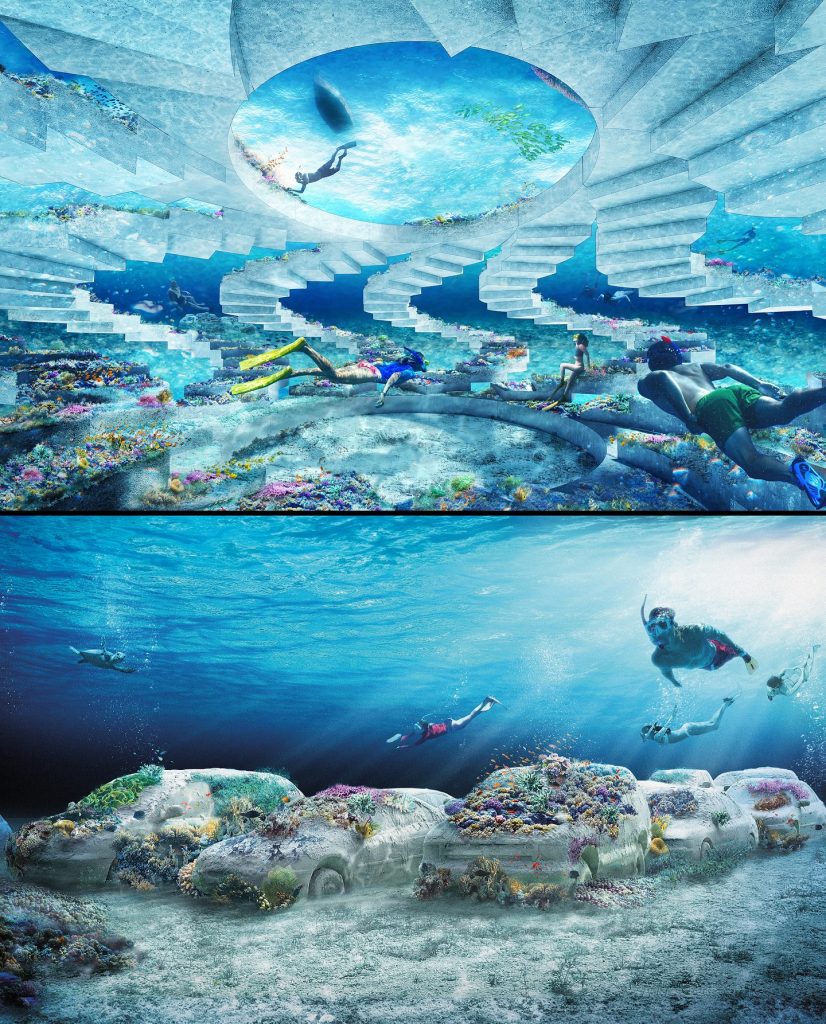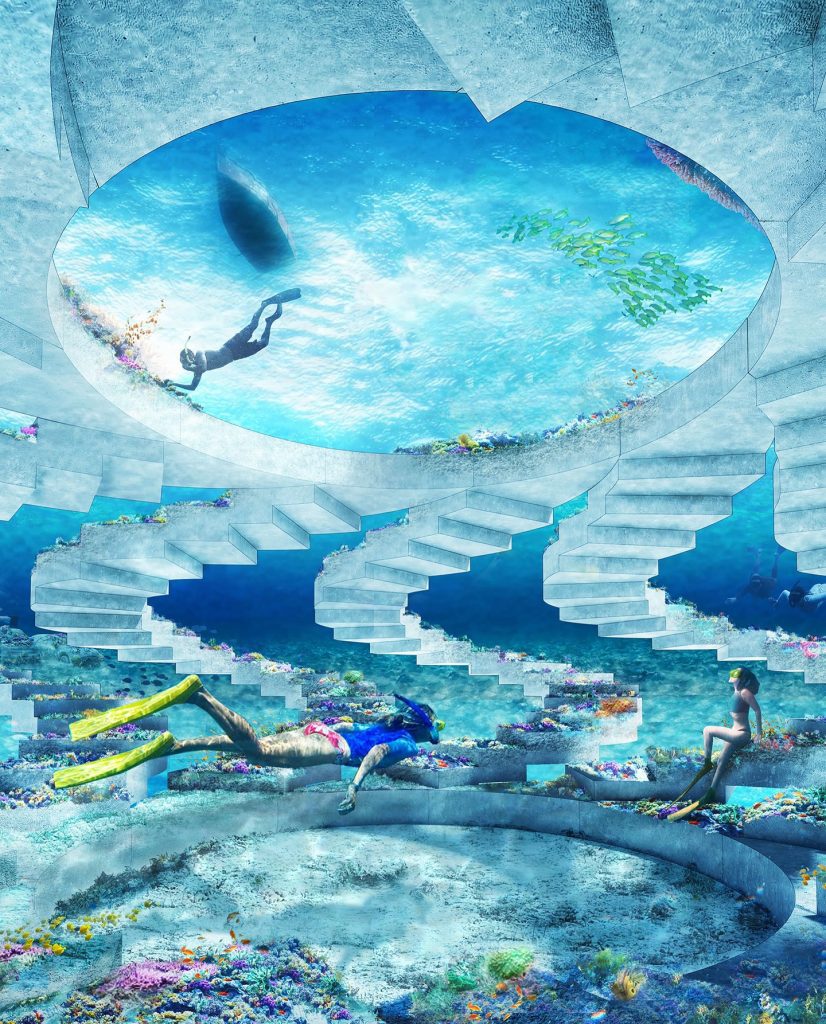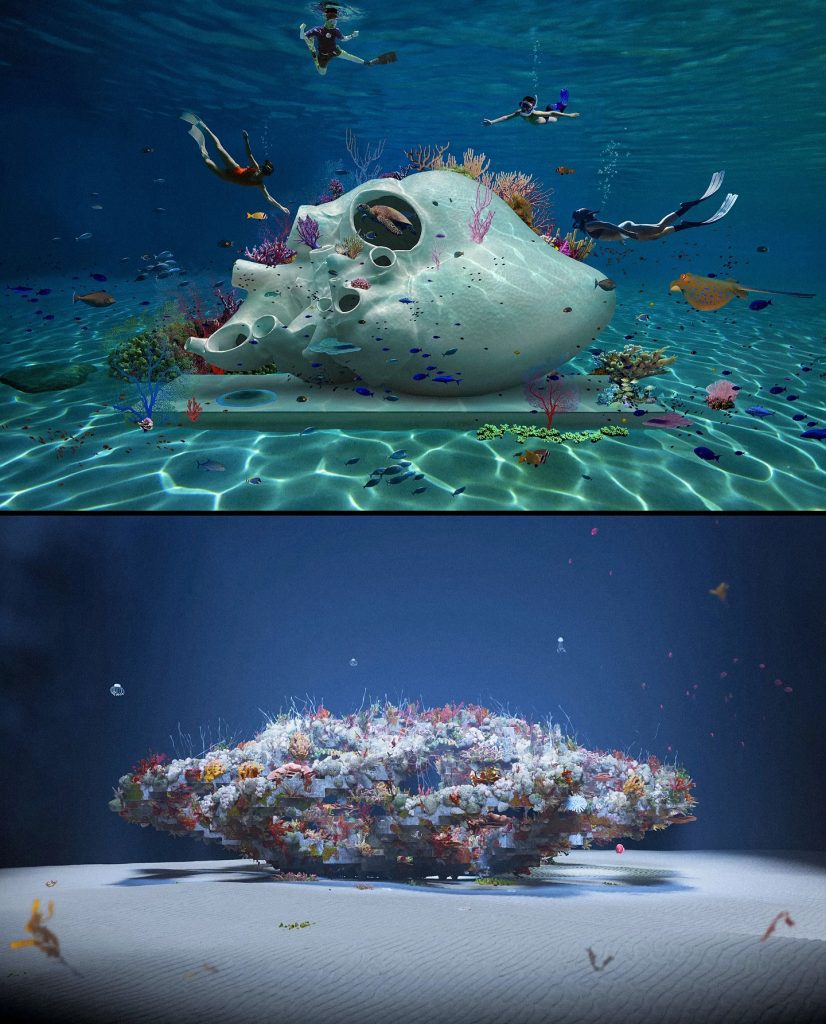Inside The ReefLine — Miami’s Stunning $40 Million, 7-Mile-Long Underwater Park That Blends Art, Ocean Life, and Climate Innovation
Beneath the turquoise waves of Miami Beach, an entirely new world is taking shape — one that blends art, architecture, and marine conservation into a single breathtaking vision. Called The ReefLine, this ambitious underwater park is the city’s latest love letter to both nature and creativity, a $40 million project that could redefine what coastal cities look like in the age of climate change.

Stretching nearly seven miles off the coast of South Beach, The ReefLine isn’t your typical tourist attraction. It’s an underwater sculpture park designed to double as an artificial reef, built to protect marine life, draw global attention, and even serve as a natural barrier against rising sea levels and beach erosion. The concept is simple but visionary — submerge art to save the ocean.
This week, Miami began installing the first of its many planned features: 22 concrete “cars” carefully engineered to encourage coral growth and attract fish. They now sit roughly 20 feet below the surface, about 780 feet offshore near 4th Street, marking the first completed phase of a dream that will eventually unfold in 11 carefully designed stages. Each phase will add new sculptures, structures, and habitats, forming a living gallery beneath the Atlantic waves.

The project, developed by BlueLab Preservation Society and led by curator Ximena Caminos, aims to bring together artists, scientists, and architects who share a passion for the environment. Caminos described The ReefLine as “a place where creativity meets responsibility,” envisioning it as both a sanctuary for marine life and a symbol of resilience for Miami’s coastline. Designed with sustainability at its core, every sculpture and concrete structure has been meticulously modeled to provide ideal conditions for coral attachment and fish shelter.
The underwater park isn’t just a visual masterpiece — it’s an ecological one. Miami’s coastal ecosystem has been under strain for decades, threatened by bleaching coral reefs, rising ocean temperatures, and recurring storm damage. The ReefLine serves as an innovative solution, helping restore natural balance while attracting divers, snorkelers, and tourists from around the world. For a city that thrives on tourism and beauty, it’s an investment in both economy and ecology.

What makes the project even more fascinating is its fusion of culture and conservation. The underwater sculptures are designed not only to host marine life but also to tell a story — one about human connection, environmental stewardship, and art’s ability to inspire real-world change. Artists from around the globe have already joined the initiative, contributing works that celebrate both nature’s fragility and humanity’s creativity.
The ReefLine’s design includes winding underwater pathways, coral-covered installations, and viewing zones that encourage exploration while minimizing disturbance to marine ecosystems. It’s an invitation to experience Miami from a completely new perspective — one where silence replaces traffic noise, fish glide past concrete structures, and sunlight filters through the surface like stained glass in an underwater cathedral.

If successful, the project could set a new global precedent for coastal cities grappling with climate challenges. It proves that innovation doesn’t always have to mean technology — sometimes, it’s about reimagining harmony between humans and nature. The ReefLine could inspire similar projects around the world, offering hope that urban creativity can coexist with environmental responsibility.
In a city known for its art fairs, nightlife, and beaches, The ReefLine adds a deeper, more meaningful layer. It’s a reminder that the beauty of Miami isn’t just found on the shore but beneath it — in the spaces where life, art, and science come together. As divers begin to explore this underwater park in the coming years, they won’t just be seeing sculptures; they’ll be witnessing a living testament to the power of imagination and the promise of renewal.

